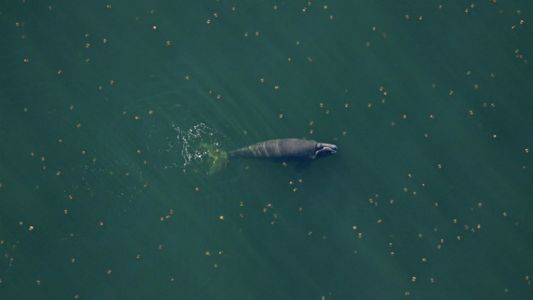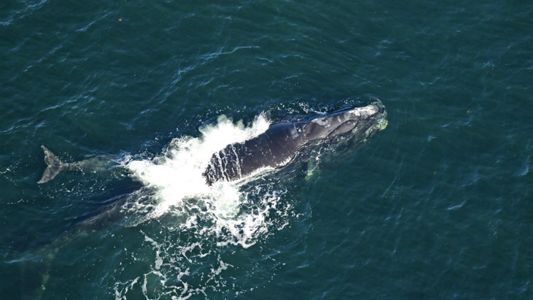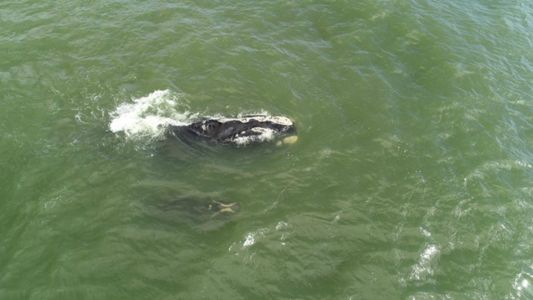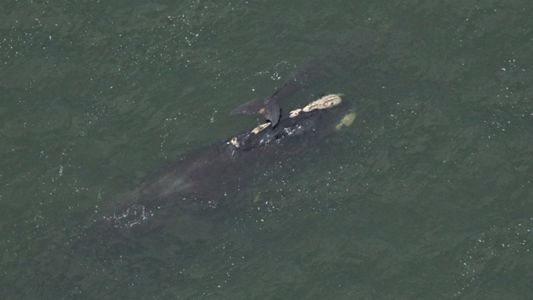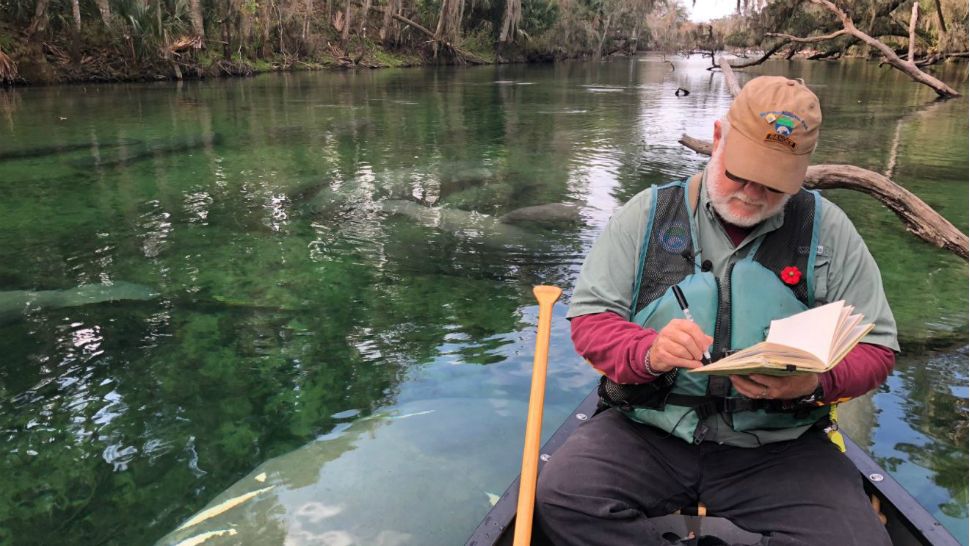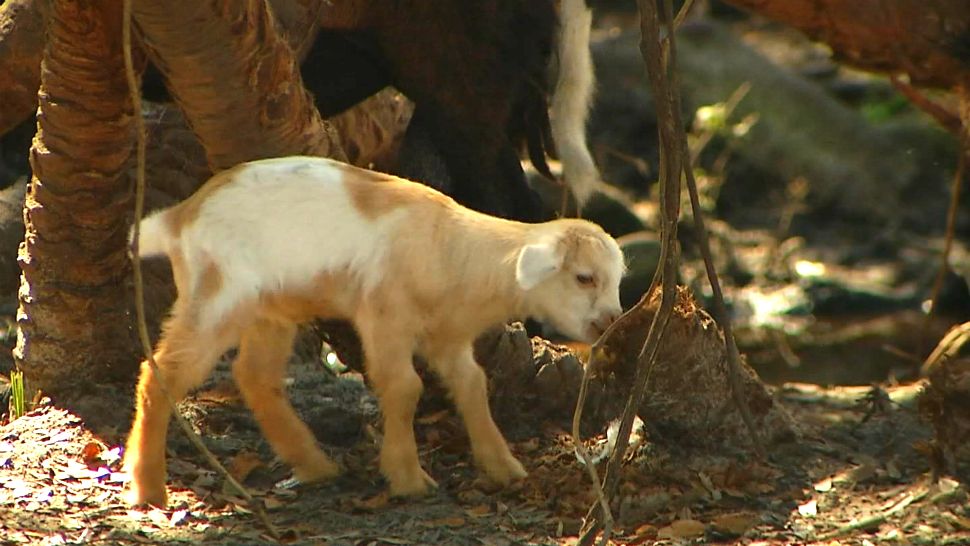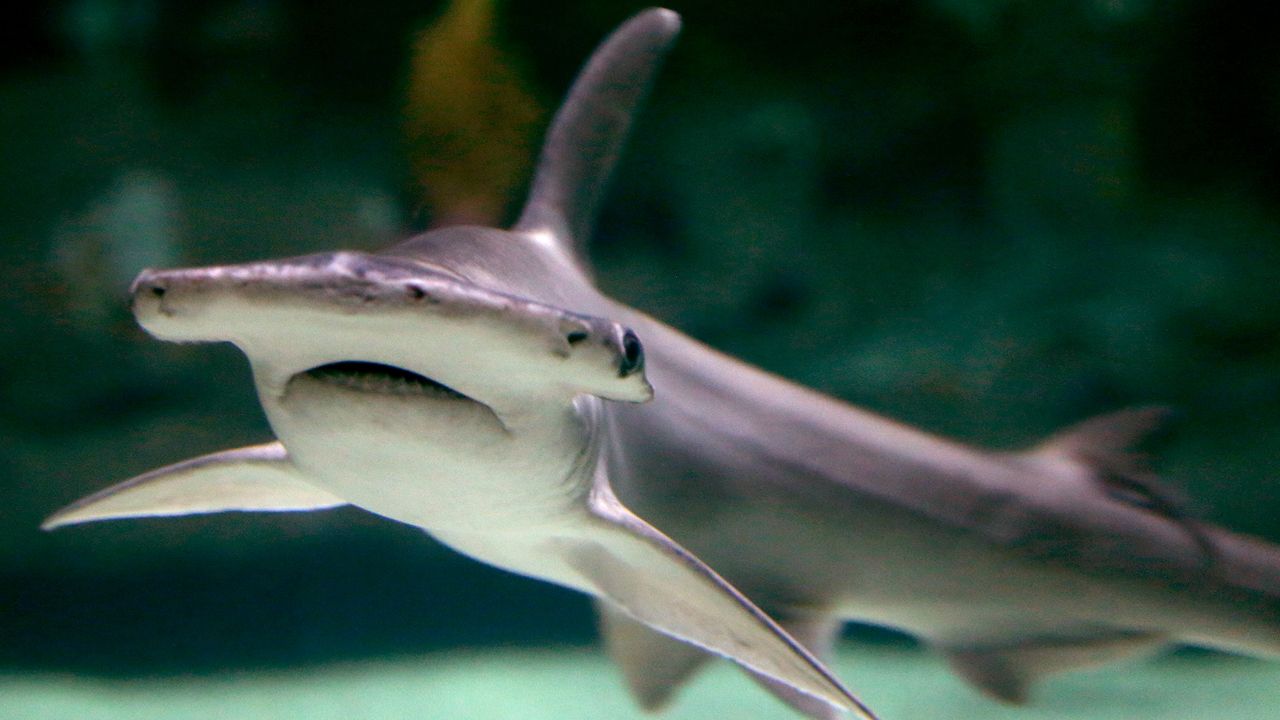SEBASTIAN INLET, Fla. — A seventh North Atlantic right whale calf — among the most endangered whales in the world — has been spotted this winter calving season.
- 7th north Atlantic right whale mother-calf pair spotted this season
- Endangered mammals migrate south for winter to warmer waters
- Biologists concerned because number of calves born has been declining
- RELATED:
The mother-calf pair was sighted February 14 off St. Catherine's Island, Georgia, which is south of Savannah, the Florida Fish and Wildlife Conservation Commission said. The mother, designated No. 3270, was first spotted in 2002, so she's at least 17 years old, they said.
The sixth mother-calf pair was seen off Volusia County just a few days earlier. North Atlantic right whale No. 3370 was seen with her second calf off North Peninsula State Park.
The fifth mother-calf pair was seen last month off the coast of Brevard County. Right whale No. 4180 was spotted with her first known calf nursing just off the beach near Sebastian Inlet State Park, FWC said. The mother is thought to be at least 8 years old, which is just at the beginning of the marine mammals' reproductive age.
This calving season has brought a sliver of optimism after a devastating 2017 and 2018 for the right whale population. During that time, 20 right whales died in what National Oceanic and Atmospheric Administration biologists call an "unusual mortality event," many from boat strikes or fishing line entanglements. To make matters worse, few mothers bore calves during that time.
Despite the baby boom, FWC says more than 16 mother-calf pairs need to be spotted this season in order for the whale's population to grow.
North Atlantic right whales migrate south for the winter from Canada and Cape Cod to warmer waters off the coast of Florida and Georgia, where they bear young after a year-long pregnancy.
Other sightings this calving season, per the FWC, include:
- January 25: Right whale No. 2503, nicknamed "Boomerang" for a scar on her fluke, was spotted with a calf off Jekyll Island, Georgia. She has been a mother to several other calves, the last one born during the 2014-15 season.
- January 17: Right whale No. 1204 was seen with a calf about 3.5 miles off Amelia Island, Florida.
- January 13: A right whale thought to be No. 3317 was seen with a calf just off the beach at Ponte Vedra Beach, Florida.
- January 6: Right whale No. 2791 was seen with a calf just off Amelia Island, Florida, surfacing amid blobs of cannonball jellyfish.
NOAA researchers say there are less than 500 North Atlantic right whales left — and only about 100 of those are breeding females. The large marine mammals are susceptible to vessel strikes, because they like to hug the coastline, bringing them near heavy port traffic. They also are dark in color and lack a dorsal fin, so they're hard to spot in the water.
"These southern waters are where right whales give birth and nurse their young, making it extremely important for people to be aware of the whales' movement and migratory patterns," said Tom Pitchford, a biologist with the FWC.
The calving season off the coast of Florida and Georgia typically runs until April 15.
Because they hug the coast, the whales can also be seen from beach areas.
If you are on a boat and you see a right whale, FWC says you should follow these guidelines:
- Slow your vessel to avoid the whale.
- Do not attempt to approach it.
- Record the latitude and longitude of the whale's position, or other coordinates.
- Slowly move to a distance of 500 yards or more.
If you do see a right whale, FWC officials urge you not to approach it but call (877) WHALE-HELP immediately so they can examine and document it.
The line is maintained by the Marine Resources Council's volunteer sighting network.




